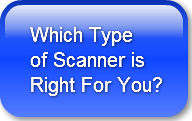Document Management Systems
-
The orderly, structured electronic filing of your content, and the storage, retrieval, archiving of both electronic and scanned paper records or files.
“Our Document Management System has increased our efficiency and reduced the clutter….our clients see us as more professional…”
Partner, CA FirmWhy do Document Management? -- 6 Important Reasons
1. Reduced retrieval costs: Up to 70% of the cost of a traditional filing system. It takes about 20 minutes for someone to look for, retrieve, deliver, then re-file a document back to storage. Multiply your hourly labour costs by 30% and that's your hard costs for just one file. Don't forget to include employee benefits into your labour costs. - For electronic retrieval it is seconds with no refiling cost
2. Lower data entry costs: The cost for performing data entry on scanned documents is less than the labour cost for physically filing them into file drawers.
3. Locating documents for retrieval: Savings come from ease for anyone to locate a document. A document imaging system enables anyone to find a file quickly. Even multiple people can view the same file at a time.
4. Security of access and storage: Someone cannot access a document unless they have access rights to it. An audit control program keeps track of every search and retrieval done by users. These tools are critical in establishing compliance with privacy legislation.
5. Simultaneous access: With a document imaging system multiple people can access the same document simultaneously. This may be necessary for conferencing in the same room or with participants around the world.
6. Provide remote access to records: A Document Imaging program can enable a company or government agency to let employees or other individuals, outside the office, have access to files. With the increased importance of the Internet, the ability for individuals to access documents on line is of paramount importance. Access to documents can be controlled by logins and access rights.
Additional Opportunities to Gain Productivity
With the ability to directly enter electronic documents into the system at the time of original creation, it is possible to reduce the input effort and eliminate many costly paper copies for distribution.
By integrating the Document Management processes into the business workflow, substantial gains in user productivity can be achieved. When combined with functionality provided by new digital multifunction devices, further leverage in technology investment can be obtained.
Leppert offers the expertise to design, integrate and maintain Document Management systems in a wide variety of applications. A range of potential software solutions are considered as the basis of each client assessment.
Document Management partners include:
Global 360, Sentryfile, Kyocera, Samsung, NSI Autostore, Fujitsu, Kodak.
Automated Document Processing
Leppert is able to assist clients in automating their document processing using solutions from a number of suppliers. Working with NSI Autostore tools it is possible to create customized indexing folders on the screen of selected multifunction devices (MFP) and use them to scan and index documents into backend systems. These tools permit advanced functionality to be put into place with less demand for user training and with limited need for manual data entry.
The Autostore suite of products permits capture from multiple brands of MFP devices as well as from electronic data sources. Processed records can be loaded automatically into many document repository systems including Microsoft Sharepoint, Documentum, Filenet, Laser Fiche, SentryFile 5...and many others.
Using other tools including Capture Plus, another middleware product which permits the automated operation of sophisticated workflows for indexing and storing files, Leppert is able to simplify many tedious and unpopular processes in the office. Processing documents using barcodes, database connectors, OCR systems and other advanced tools permits clients to manage their workflow more efficiently and with less dependence upon manual processing.
Automated processing can be applied to many types of filing issues in your office:
- Accounts Payable
- Accounts Receivable
- Client Records
- Shipping and Logistics Records
- Legal Filing
- Customer Support Records
- Technical Papers
- Quality Control Records


